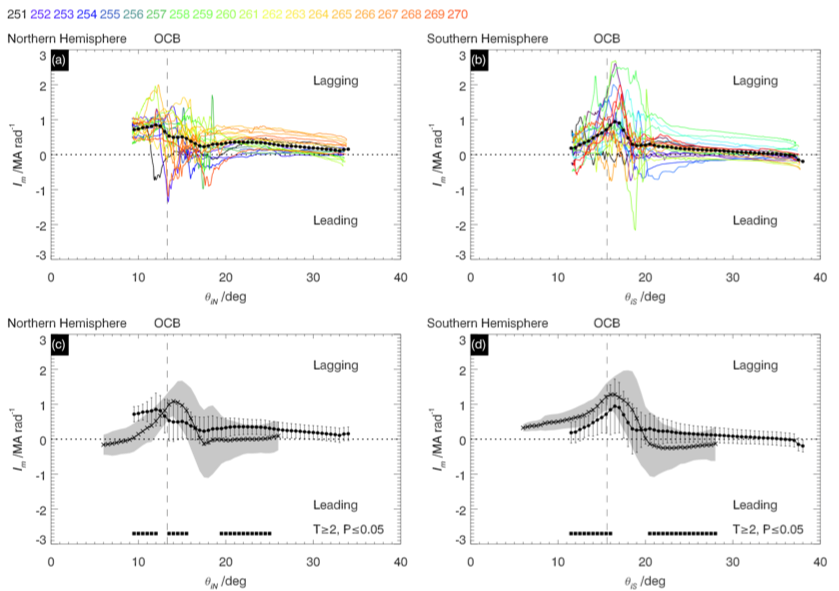MIST
Magnetosphere, Ionosphere and Solar-Terrestrial
Field‐Aligned Currents in Saturn's Magnetosphere: Observations From the F‐Ring Orbits
By Gregory J. Hunt, Department of Physics, Imperial College London, UK.
In a magnetized planetary system, large-scale electrical currents that flow along the magnetic field lines are fundamental in the transfer of angular momentum through the coupling of the magnetosphere and ionosphere [e.g., Cowley, 2000]. In the case of Saturn, two such types of these current systems have been deduced from Cassini magnetometer data and studied in detail [e.g. Bunce et al., 2008; Talboys et al., 2009a; Talboys et al., 2009b; Southwood & Kivelson, 2009; Talboys et al., 2011; Hunt et al., 2014, 2015, 2016; Bradley et al., 2018]. The first type is an axisymmetric, quasi-static field-aligned current system, which is associated with the transfer of angular momentum from the planet to Saturn’s outer magnetospheric plasma. The second type is associated with the planetary period oscillation (PPO) phenomenon at Saturn [e.g., Carbary & Mitchell, 2013]. Specifically, there are two rotating field-aligned current systems with oppositely directed currents on either side of the pole. One is associated with the northern hemisphere and the other with the southern hemisphere. These two rotating current systems result in the near 10.7-hour oscillations observed throughout the Saturnian system [e.g., Southwood & Kivelson, 2007; Andrews et al., 2010; Southwood & Cowley, 2014].
Hunt et al. [2018a] performed a statistical survey for both the northern and southern hemisphere auroral field-aligned current regions from a set of orbits prior to Cassini’s Grand Finale, known as the F-ring orbits. This analysis showed in each hemisphere there was the quasi-static and that hemisphere’s PPO field aligned current systems. Interestingly, the PPO current systems’ strengths had decreased by approximately 50% when compared to previous results [Hunt et al., 2014, 2015]. This reduction is in agreement with a decrease in the PPO amplitudes as determined by Hunt et al. [2018b]. The general form and strengths of the overall current profiles for both hemispheres are shown in the figure below. Other differences were observed in the azimuthal field poleward and equatorward of the field-aligned current region. These imply possible seasonal and local time effects on the overall field-aligned current structure and azimuthal field topology.
For more information, see our paper below:
Hunt, G. J., Provan, G., Bunce, E. J., Cowley, S. W. H., Dougherty, M. K., & Southwood, D. J. (2018a). Field‐aligned currents in Saturn's magnetosphere: Observations from the F‐ring orbits. Journal of Geophysical Research: Space Physics, 123, 3806–3821. https://doi.org/10.1029/2017JA025067

Figure: Overall current profiles versus northern (a) and southern (b) ionospheric colatitudes. Coloured profiles are the F-ring orbit data, with color code shown at the top of the figure. A mean profile is shown by the joined filled circles. (c, d) Comparison between the F-ring orbit mean profiles from (a) and (b) and the 2008 mean profile (joined crosses) for the northern and southern hemisphere, respectively. The error bars are the standard deviation of the F-ring means. Grey shaded regions are standard deviation of the 2008 means. Black squares show colatitude bins where Welch’s T test shows the 2008 and F-ring averages are significantly different. The open-closed field line boundary (OCB) is shown by the vertical dashed lines.